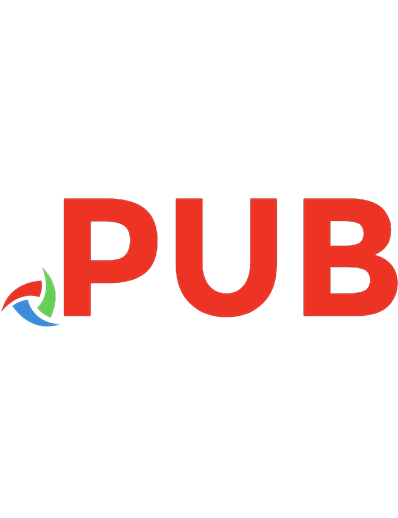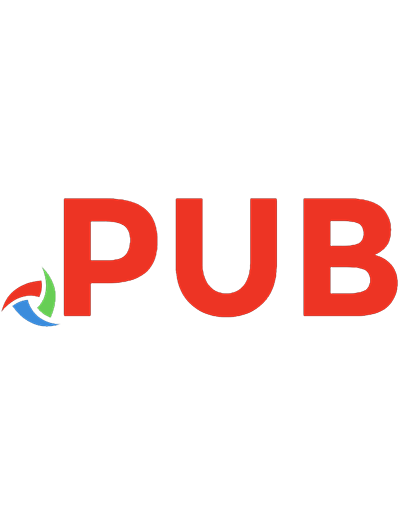Angular in Action [2 ed.] 9781617293313
"Angular in Action" teaches you everything you need to build production-ready Angular applications. You'l
201 51 5MB
English Pages 400 Year 2018
Table of contents :
Cover
Copyright
Dedication
preface
acknowledgments
about this book
about the author
about the cover illustration
Chapter 1: Angular: a modern web platform
1.1 Why choose Angular?
1.2 What you’ll learn
1.3 The journey from AngularJS to Angular
1.4 Angular: a platform, not a framework
1.4.1 Angular CLI
1.4.2 Server rendering and the compiler
1.4.3 Mobile and desktop capabilities
1.4.4 UI libraries
1.5 Component architecture
1.5.1 Components’ key characteristics
1.5.2 Shadow DOM
1.5.3 Templates
1.5.3 JavaScript modules
1.6 Modern JavaScript and Angular
1.6.1 Observables
1.7 TypeScript and Angular
Summary
Chapter 2: Building your first Angular app
2.1 Previewing the chapter project
2.2 Setting up the project
2.3 The basic app scaffolding
2.4 How Angular renders the base application
2.4.1 App component
2.4.2 App module
2.4.3 Bootstrapping the app
2.5 Building services
2.6 Creating your first component
2.7 Components that use components and services
2.8 Components with forms and events
2.9 Application routing
Summary
Chapter 3: App essentials
3.1 Entities in Angular
3.1.1 Modules
3.1.2 Components
3.1.3 Directives
3.1.4 Pipes
3.1.5 Services
3.2 How Angular begins to render an app
3.3 Types of compilers
3.4 Dependency injection
3.5 Change detection
3.6 Template expressions and bindings
3.6.1 Interpolation
3.6.2 Property bindings
3.6.3 Special property bindings
3.6.4 Attribute bindings
3.6.5 Event bindings
Summary
Chapter 4: Component basics
4.1 Setting up the chapter example
4.1.1 Getting the code
4.2 Composition and lifecycle of a component
4.2.1 Component lifecycle
4.2.2 Lifecycle hooks
4.2.3 Nesting components
4.3 Types of components
4.4 Creating a Data component
4.5 Using inputs with components
4.5.1 Input basics
4.5.2 Intercepting inputs
4.6 Content projection
Summary
Chapter 5: Advanced components
5.1 Change detection and optimizations
5.2 Communicating between components
5.2.1 Output events and template variables
5.2.2 View Child to reference components
5.3 Styling components and encapsulation modes
5.3.1 Adding styles to a component
5.3.2 Encapsulation modes
5.4 Dynamically rendering components
5.4.1 Using the Ng-bootstrap modal for dynamic components
5.4.2 Dynamically creating a component and rendering it
Summary
Chapter 6: Services
6.1 Setting up the chapter example
6.1.1 Getting the chapter files
6.1.2 Sample data
6.2 Creating Angular services
6.3 Dependency injection and injector trees
6.4 Services without dependency injection
6.5 Using the HttpClient service
6.5.1 HttpInterceptor
6.6 Helper services
6.7 Services for sharing
6.8 Additional services
Summary
Chapter 7: Routing
7.1 Setting up the chapter example
7.2 Route definitions and router setup
7.3 Feature modules and routing
7.4 Route parameters
7.4.1 Creating links in templates with routerLink
7.4.2 Accessing the route parameters in a component
7.5 Child routes
7.6 Secondary routes
7.6.1 Defining a secondary route
7.6.2 Navigating between secondary routes
7.6.3 Closing a secondary route and programmatic routing
7.7 Route guards to limit access
7.8 Lazy loading
7.9 Routing best practices
Summary
Chapter 8: Building custom directives and pipes
8.1 Setting up the chapter example
8.2 Crafting custom directives
8.2.1 Creating an attribute directive
8.2.2 Modifying a component with a directive with events
8.2.3 Creating a structural directive
8.3 Crafting custom pipes
8.3.1 Creating a pure pipe
8.3.2 Creating an impure pipe
Summary
Chapter 9: Forms
9.1 Setting up the chapter example
9.1.1 Review the app before starting
9.2 Template-driven forms
9.2.1 Binding model data to inputs with NgModel
9.2.2 Validating form controls with NgModel
9.2.3 Custom validation with directives
9.2.4 Handling submit or cancel events
9.3 Reactive forms
9.3.1 Defining your form
9.3.2 Implementing the template
9.3.3 Watching changes
9.3.4 Custom validators with reactive forms
9.3.5 Handling submit or cancel events
9.3.6 Which form approach is better?
9.4 Custom form controls
Summary
Chapter 10: Testing your application
10.1 Testing tools and setting up the chapter example
10.1.1 Testing tools
10.2 Unit testing
10.2.1 Anatomy of unit tests
10.2.2 Testing pipes
10.2.3 Testing services, stubs, and mocking HTTP requests
10.2.4 Testing components and using testing modules
10.2.5 Testing directives
10.3 e2e testing
10.4 Additional testing strategies
10.4.1 How much testing is enough?
10.4.2 When do I write tests?
10.4.3 What do I write, e2e or unit tests?
10.4.4 What if I don’t have time to write tests?
10.4.5 What about other types of testing?
Summary
Chapter 11: Angular in production
11.1 Building Angular for production
11.1.1 Production build
11.1.2 Optimizing for target browsers
11.1.3 Progressive Web Apps
11.1.4 Internationalization (i18n)
11.1.5 Using alternative build tooling
11.1.6 Server-side rendering or pre-rendering
11.1.7 Build pipelines
11.2 Angular architecture choices
11.2.1 Lazy load routes
11.2.2 Reduce external dependencies
11.2.3 Stay up-to-date
11.3 Deployment
Summary
Appendix A: Upgrading from AngularJS to Angular
A.1 Option 1: Don’t upgrade
A.2 Option 2: Rewrite from scratch
A.3 Option 3: Incrementally upgrade
Summary
Index
![Angular in Action [2 ed.]
9781617293313](https://dokumen.pub/img/200x200/angular-in-action-2nbsped-9781617293313.jpg)









